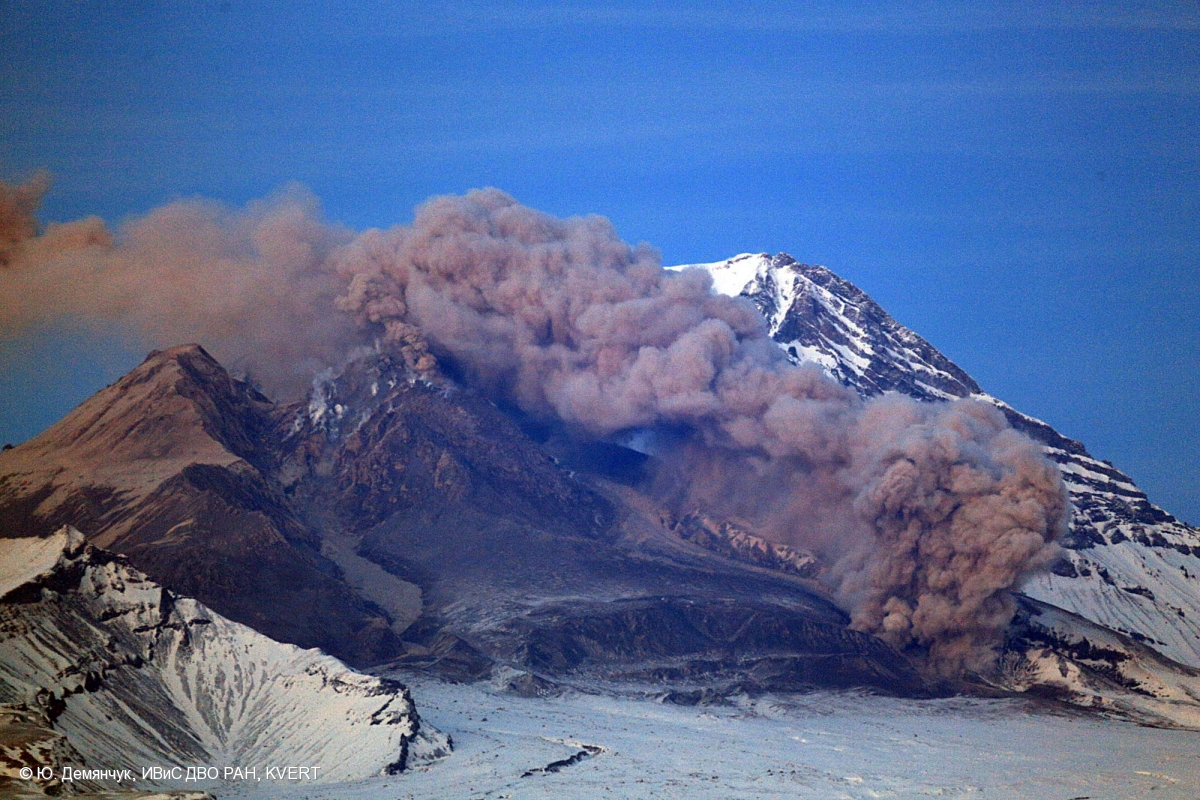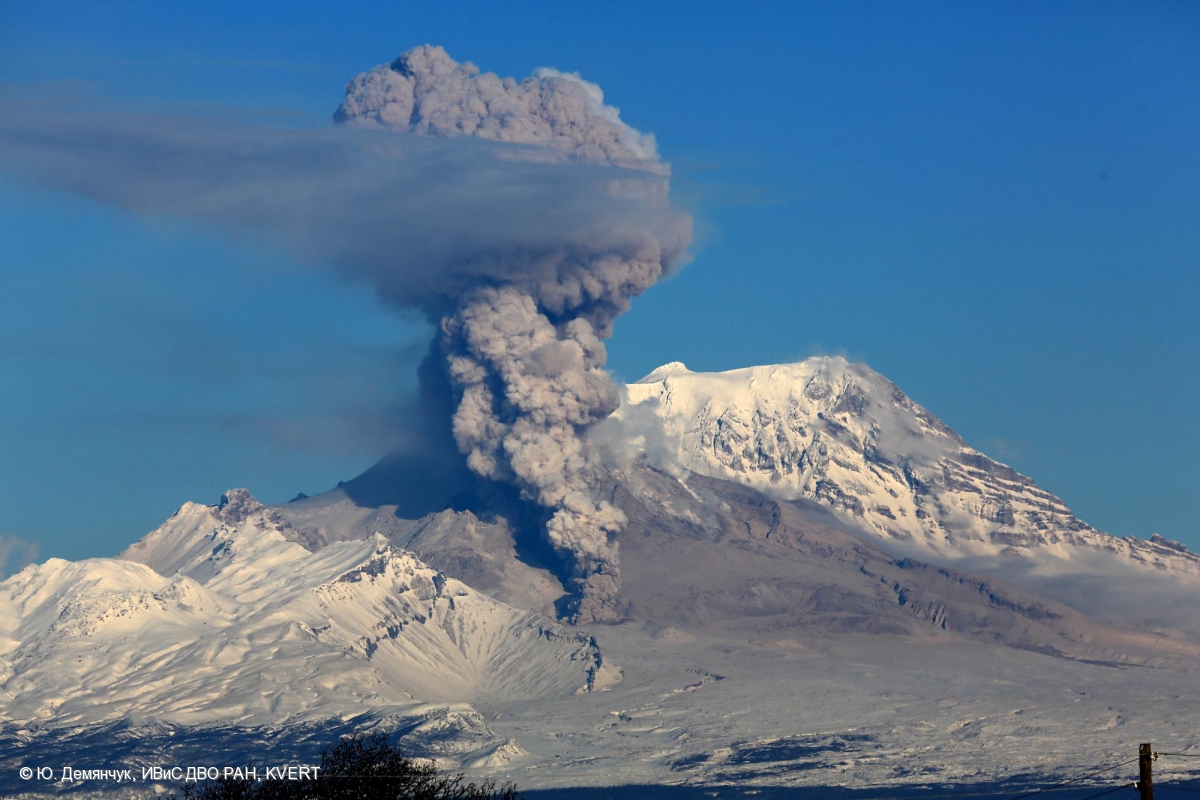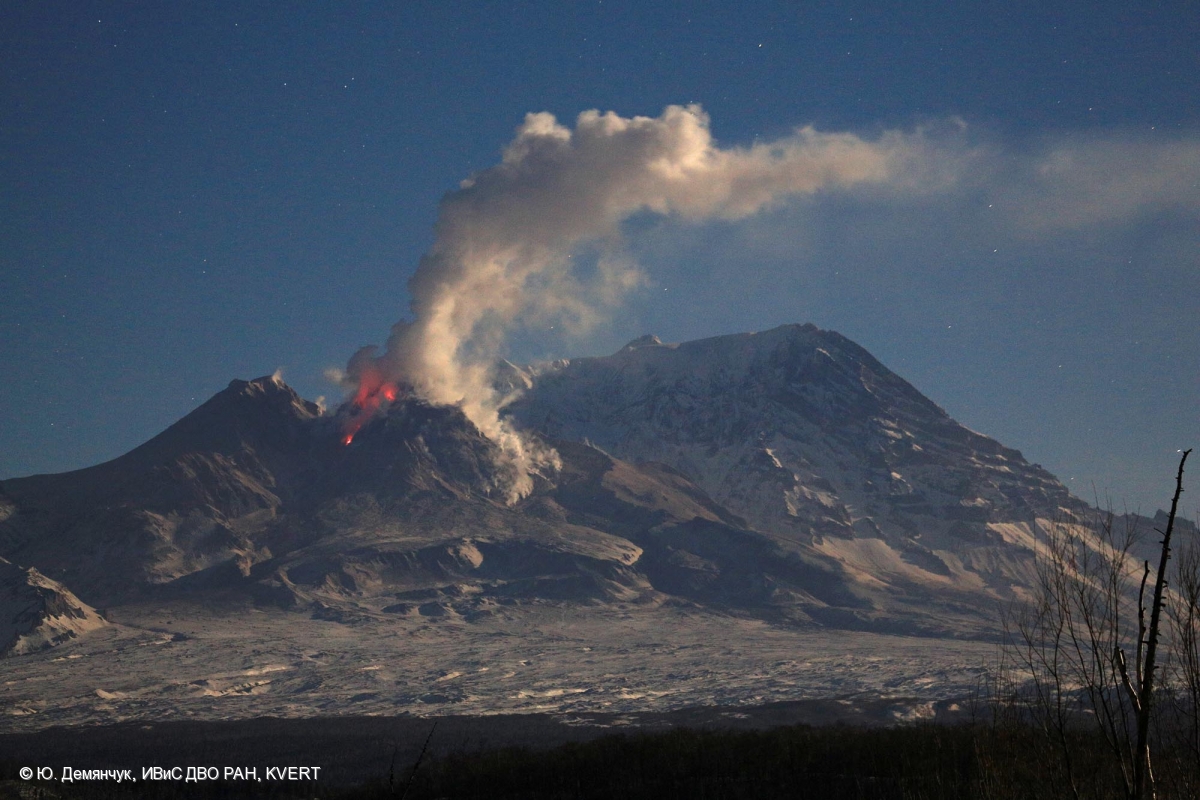Report on Sheveluch (Russia) — March 2017
Bulletin of the Global Volcanism Network, vol. 42, no. 3 (March 2017)
Managing Editor: Edward Venzke.
Research and preparation by Paul Berger.
Sheveluch (Russia) Lava dome extrusion continues with occasional explosions and ash plumes through February 2016
Please cite this report as:
Global Volcanism Program, 2017. Report on Sheveluch (Russia) (Venzke, E., ed.). Bulletin of the Global Volcanism Network, 42:3. Smithsonian Institution. https://doi.org/10.5479/si.GVP.BGVN201703-300270
Sheveluch
Russia
56.653°N, 161.36°E; summit elev. 3283 m
All times are local (unless otherwise noted)
An eruption at Sheveluch has been ongoing since 1999, and recent activity there was previously described through August 2015 (BGVN 42:02). During September 2015-February 2016, the same type of activity prevailed, with lava dome extrusion, incandescence, hot block avalanches, fumarolic activity, and occasional strong explosions that generated ash plumes. The following data comes from Kamchatka Volcanic Eruption Response Team (KVERT) reports. During this period the Aviation Color Code remained at Orange (the second highest level on a four-color scale).
KVERT reported that during 1 September 2015-28 February 2016, lava-dome extrusion onto the N flank was accompanied by fumarolic activity, dome incandescence, hot avalanches, and ash explosions. Satellite images detected an almost daily, and sometimes intense, thermal anomaly over the dome. Ash plumes generated by occasional explosions, hot avalanches, and sometimes strong winds rose to altitudes of 2.5-7 km and drifted primarily SE during September-December 2015 (up to 185 km) and in more variable directions (up to 200 km) during January-March 2016. A series of photos taken in late 2015 shows characteristic types of activity, including small explosions and hot avalanches on 28 October (figure 39), an explosion and pyroclastic flow on 22 November (figure 40), and incandescence on 25 November (figure 41).
Thermal anomalies based on MODIS satellite instruments analyzed using the MODVOLC algorithm were frequent during the current reporting period, in contrast to March-August 2015 (BGVN 42:02). From September 2015-February 2016, thermal anomalies were detected 10-15 days each month. On 22 November, seven pixels were recorded.
Geological Summary. The high, isolated massif of Sheveluch volcano (also spelled Shiveluch) rises above the lowlands NNE of the Kliuchevskaya volcano group. The 1,300 km3 andesitic volcano is one of Kamchatka's largest and most active volcanic structures, with at least 60 large eruptions during the Holocene. The summit of roughly 65,000-year-old Stary Shiveluch is truncated by a broad 9-km-wide late-Pleistocene caldera breached to the south. Many lava domes occur on its outer flanks. The Molodoy Shiveluch lava dome complex was constructed during the Holocene within the large open caldera; Holocene lava dome extrusion also took place on the flanks of Stary Shiveluch. Widespread tephra layers from these eruptions have provided valuable time markers for dating volcanic events in Kamchatka. Frequent collapses of dome complexes, most recently in 1964, have produced debris avalanches whose deposits cover much of the floor of the breached caldera.
Information Contacts: Kamchatka Volcanic Eruptions Response Team (KVERT), Far East Division, Russian Academy of Sciences, 9 Piip Blvd., Petropavlovsk-Kamchatsky, 683006, Russia (URL: http://www.kscnet.ru/ivs/kvert/); Institute of Volcanology and Seismology, Far Eastern Branch, Russian Academy of Sciences (IVS FEB RAS), 9 Piip Blvd., Petropavlovsk-Kamchatsky 683006, Russia (URL: http://www.kscnet.ru/ivs/eng/); Hawai'i Institute of Geophysics and Planetology (HIGP), MODVOLC Thermal Alerts System, School of Ocean and Earth Science and Technology (SOEST), Univ. of Hawai'i, 2525 Correa Road, Honolulu, HI 96822, USA (URL: http://modis.higp.hawaii.edu/).




